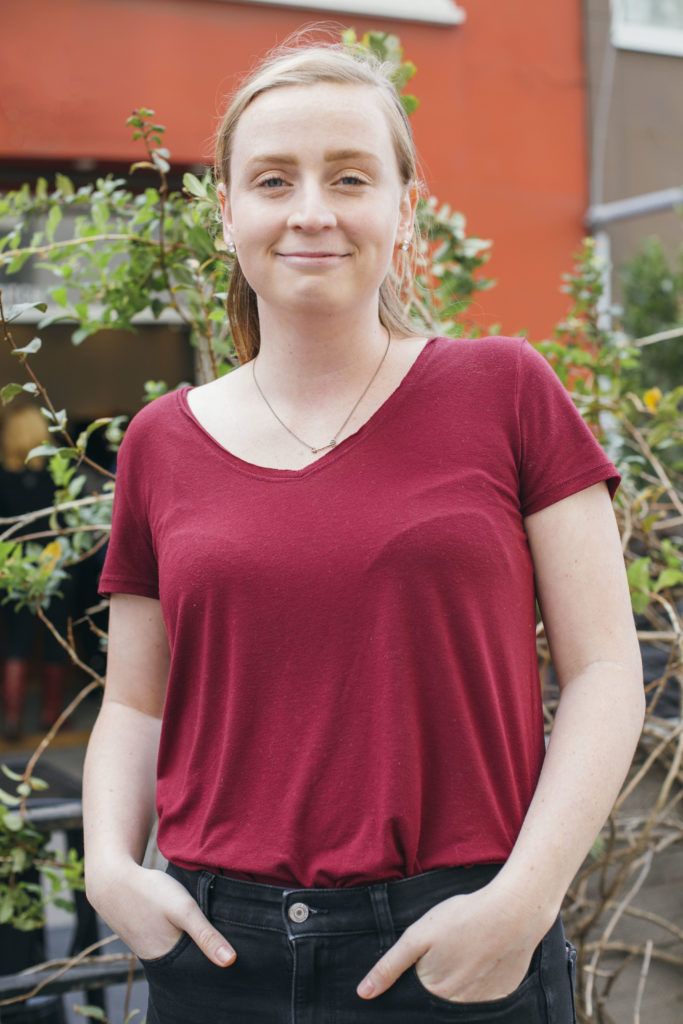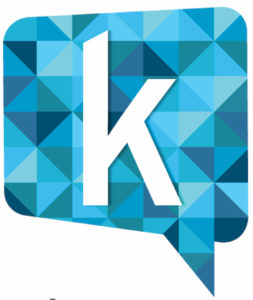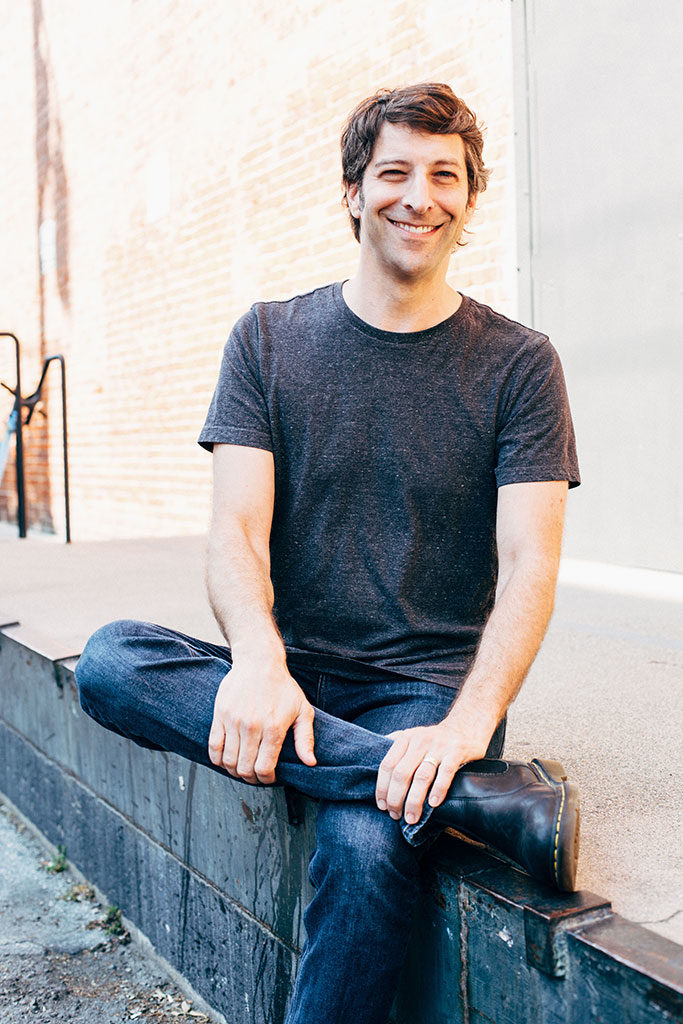In The Know | Jake Dailey, Nielsen Lead Data Scientist

Today’s most successful companies are data-driven and winning strategies are defined by a company’s ability to extract actionable insights from their data.
To learn more about what separates leaders in data analytics from the rest, Karbo Com joined Jake Dailey, Lead Data Scientist at Nielsen, at the company’s San Francisco office to discuss the challenges and opportunities.
Let’s hear a little bit about the work you do at Nielsen.
I’m a data scientist and I work primarily on our digital products. When people think of Nielsen, they tend to think about our TV business: the TV ratings. These ratings give advertisers, content producers, and TV networks a meeting ground where they can agree on how much to value an ad spot.
It’s the same on the digital side: web publishers have advertising space online and there are plenty of people willing to go buy online advertising. Nielsen provides these advertisers with verification that assures them that if they run a campaign on a certain website, that they will reach the people they were told they were going to reach, achieve the promised number of impressions, and that their money will be well spent.
Advertisers are asking questions like, “How do I know that the ad I’ve paid for is being seen by real people and not robots?” Or, “How do I know that our ad actually had an impact on my business?” The data that some publishers are designing now tries to address these questions.
It’s my job as a data scientist to design the measurement and to think about this from a statistical perspective. For example, what’s the best, most unbiased, objective way we can measure how people are viewing ads and what the population is doing when it comes to seeing advertising?
How have you seen successful companies approach data?
The most successful companies are really smart about how they quantify their performance. They understand what exactly it is that they need to measure impact. But then in order to inform that, you need to start by asking “what are we going to do with this information?” Once you start asking that question, then you can get very specific about what kind of data would allow your company to make decisions and think critically about strategy.
These successful companies are great at harnessing data to observe how they’re performing. The road to doing this can sometimes require a big tech change for companies, but once they have that in place it enables them to move so much faster because they can iterate rapidly and can think about how to adjust strategy on the fly based on the key metrics they’ve defined.

How can marketing teams use data to make better decisions?
Many marketing teams are trying to understand the relationship between consumer characteristics—maybe behavioral, like the websites they go to, or maybe demographic, like how old they are—and their actions. One way marketing teams can use data to make smarter business decisions is by employing machine learning and statistics to predict consumer behavior and analyze outcomes in their data.
What are some key questions marketers should be asking themselves about the data they’re collecting?
One key question is, ‘What are the gaps in what we can and what we can’t observe?’ That’s so important in digital advertising, but I think it’s still a big blind spot in the industry. If you haven’t appreciated where you might be missing information, then you’re likely to be led astray.
An example of this could be that you have a dataset that only covers a small subset of the people you’re actually interested in targeting, or it might be that you systematically have a hard time getting people to answer a survey.
How do you address those gaps at Nielsen?
At Nielsen, we have a representative panel that we’ve recruited from around the country so we can observe what behaviors look like within the population.
The challenge with online advertising is that many advertisers can only target or measure people that already go to specific sites, search specific things, or buy their products. If I’m trying to understand if my ad worked and I’m only able to target the people that were already going to buy my product, how do I know that my ad made a meaningful impact on that decision? After all, if I’m only able to target those people, there’s a good chance that they would have ended up there even if I didn’t advertise to them.
So it turns out to be very hard for advertisers and publishers to come up with good measures of success in an inexpensive, scalable, and unbiased way. At Nielsen, bringing objective sensibility to the picture is an important part of the role we play with advertisers and publishers.
What are some common pitfalls to avoid?
Imagine a venn diagram with three circles: statistics, computer science, and business. Smart data science happens at the intersection of all three. What can be challenging is if you’re in an organization that doesn’t have people with skill sets spanning those areas. Not having the right experts on board is a pitfall to avoid.
On one hand, we now have tools that make it easy to take your data and see what’s going on in it, which has made data science and analytics much more accessible to people who may be approaching the field for the first time. The real challenge here is often when you try to draw a conclusion based on something that you’ve observed. There are a lot of factors that you have to take into account—and a lot of uncertainty you have to be honest about.
Your dashboard may be telling you that your campaign grew by a certain amount from this day to the next day among a targeted group. And you like to hear that. You make some decisions around ad spend based on that observed growth. But if you’re not being totally honest with yourself about the uncertainties then that data may be misleading. For example, did the average number of people seeing your campaign each day actually grow based on your strategy or is this just a normal uptick that doesn’t indicate a long-term, material improvement? This is the kind of tough question that data scientists and statisticians aim to answer.
It often comes back to having the right talent onboard: people that understand computer science, statistics, business and can help span that gap between what should be measured and the conclusions that can be drawn from that data.

At Karbo Com, we often generate compelling data by conducting surveys. What advice do you have for companies who want to design their own survey?
It’s incredibly important to understand who will respond to your survey. If you choose to do an online survey, you’ve got to ask yourself, ‘Do we have a way to measure what kind of people are answering our survey in the first place?’ And you need to determine if aligns with the people you actually want to measure. You might only get a certain demographic of person that’s actually willing to take a survey, and that can be a big problem for the conclusions you draw
Next you need to ensure that people taking your survey will be able to answer your questions truthfully. When it comes to the responses, you want to be very careful not to pigeonhole people into multiple choice responses that aren’t appropriate for them, while still giving yourself a way to analyze the data.
Sometimes we’d rather have an open ended response to whatever question we have to really understand what’s going on in the respondent’s mind without putting words in their mouth–this helps surface hypotheses to test through more surveys or experiments. However, in opting for open ended questions we accept that their responses are much harder to analyze and draw conclusions from than the quantitative measures we can create from other question types.
Another important thing to consider is the effect that incentives can have on the quality of results. If you’re offering folks an incentive to take your survey, then it’s likely that a segment of those people are going to just blaze through and not really spend a lot of time on it. So you may need to find ways to account for that.
Think about how you can get people to slow down and actually read the question. Maybe there’s a way to limit how fast they’re moving through the survey. And when you’re reviewing the data, take note of how fast they completed the survey. If someone sped through it and answered “A” for every question, you’ll need to question the validity of that data.
This interview has been edited and condensed for clarity
Want more “In The Know” expert insights? Check out Karbo Com’s interview with entrepreneur and investor Jay Adelson.
Meet The Team | Lauren, Senior Account Executive

When asked to describe Lauren Burge, our CEO Julie Karbo often uses one word: ”rockstar.” Given how gracefully Lauren handles the pressure of the spotlight and spearheads Karbo Com’s presence in Los Angeles, we can’t help but agree.
As a Senior Account Executive at Karbo Com, Lauren leads strategic thinking and communication for clients Clearsurance, The Tylt, Subtext, and Harmony Helper. Lauren has secured interviews at top tier publications like The New York Times, and recently scored coverage in Fast Company for leading integration and analytics software company TIBCO.
Born and raised in California, Lauren moved to San Francisco when she was 17 to attend the University of San Francisco. As an English major with a minor in journalism, it was there that Lauren cultivated her love of storytelling.
Wordsmithing wasn’t the only love Lauren discovered in San Francisco. Lauren tells the story of how she fortuitously met her fiancé David at the locally famous El Toyanese taco truck like it was yesterday. “It was honestly, crazy! We had so much in common that we both felt like we were meeting someone from a past life,” Lauren says.

Starting her career in public relations, Lauren took a position at Highwire PR where she cut her teeth working with industry giants like IBM and DarkTrace. With offices located in New York City, Lauren was able to fulfill a lifelong dream and live in the city that never sleeps—adding it to the growing list of iconic cities she’s called home.
In her free time, Lauren loves exploring the urban sprawl of LA and often seeks out new and exciting places to grab a beer and a bite. When she can spare the time, she’ll bring along one of her many vintage cameras (her favorite is a Rolleicord), and will compose shots en-route. “Shooting with film cameras makes the process of taking a photograph so much more intimate and delays the gratifaction of seeing the final product,” Lauren explains.
Most recently, Lauren has been teaching her french bulldog Gizmo how to ride a skateboard. According to Lauren, french bulldogs possess remarkably good balance and are known to enjoy the activity. To indulge her curiosity, Lauren bought Gizmo his own skateboard and to her excitement he’s really taken to it!
In 2020, Lauren looks forward to expanding Karbo Com’s reach and securing new business opportunities, particularly in the tech verticals she’s passionate about such as data security. We have no doubt this “rockstar” will succeed in achieving that goal.

Five Fast Facts
Essential ingredients for a happy life include: Family, friends, a lot of laughter, a job you are passionate about, and frequent travel,
Favorite movie of all time: The Big Lebowski
Biggest adventure: Backpacking through Europe. I visited Amsterdam, Berlin, and Prague with five of my close friends.
Weirdest job you ever had: Working at a retail golf shop in Palm Springs, CA.
Choice of dessert: Key lime pie.
Want to meet more of the team? Check our Meet the Team feature with Senior Account Executive Madeline Kalika!
Meet The Team | Madeline, Senior Account Executive

Senior Account Executive Madeline Kalicka says she will always be an East Coast kid at heart, and in an office crowded with Bay Area natives we truly appreciate the East Coast perspective (even if she does wear Washington Nationals gear to Giants games).
Although she loves the Bay Area, East Coast native Madeline swears you just can’t get the same kind of bagels and lox. “My mom will actually ship me lox for my birthday just so I can satisfy my cravings,” Madeline says.

Born and raised in Maryland right outside DC, Madeline graduated from the University of Wisconsin with a degree in life science communications. It was there that Madeline discovered she had a knack for explaining tech to people who weren’t from the industry, and eventually she drove west to the Bay Area — a US tech hub.
To make the move across America, Madeline and her boyfriend Josh quit their jobs and embarked on a two and a half week road trip. Along the way they hit as many major national and state parks as they could including the Badlands, The Grand Canyon, and Big Sur. “It was such an awesome experience because we got to see parts of the country we’d never seen before,” says Madeline.
At Karbo Com, Madeline leads day-to-day comms and strategic thinking for clients including RTI, Penguin Computing, 500 Startups, and Megaport. Madeline has secured briefings with WIRED Magazine, coverage by Mashable, and recently placed an exclusive article with The Wall Street Journal for client 500 Startups.
In her free time, Madeline loves seeing movies in theaters and is a self-proclaimed movie buff. “When you see a movie in theaters with friends it becomes an experience. If you’re watching a scary movie, you can feel the whole audience get tense or the excitement at a premier with mega fans in costume.”
Madeline is an invaluable member of the KC team providing leadership and dedication to every project she takes on — we are so glad she decided to swap coasts.

Five Fast Facts
High school superlative you should have gotten: Cutest couple (I’m still with my high school boyfriend of 8 years!)
Favorite topic of discussion: Movies, travel, food.
Currently listening to on repeat: Lizzo’s album Cuz I Love You and the A Star Is Born soundtrack.
Childhood hobbies: Making friendship bracelets and rollerblading.
The first thing people usually notice about you: My freckles.
Want to meet more of the team? Check our Meet the Team feature with Account Coordinator Alina Marquez!
Meet the Team | Erin Fogarty, Account Coordinator

It’s true, pretty much no one in the office can keep up with relentless energy our stellar Account Coordinator Erin Fogarty commits to her projects. Raised just outside Tahoe, Erin grew up hiking trails nearby and must have learned a thing or two about persistence from her favorite activity. She does not take no for an answer, and is committed to finding a way to reach the top no matter the terrain.
Graduating from San Francisco State University with a degree in Communications and minor in Marketing positioned her perfectly for her dream career in tech PR.
Since joining Karbo almost a year ago, Erin has hit the ground running on every account she’s joined. She plays an integral role on the Tylt, Pigeon, RTI, Harmony Helper, and Project Text teams and recently secured press coverage for Project Text in Digiday—whose site garners over 1 million unique visitors every month.
A creative at heart, Erin is a major contributor to Karbo Com’s Meet the Team feature and loves getting involved/collaborating with our internal marketing team.
Most recently, Erin moved from SF to begin trailblazing Karbo Com’s first physical presence expansion into the tech hub of Seattle, and we could not think of a better emissary. “After so many years in San Francisco, I’m excited to start this new journey in Seattle! I am going to miss Karl the Fog though…”
Erin describes herself as the perfect balance between a media nerd and a social butterfly. “I feel like I have a pretty even balance between the days I curl up to watch a movie or read a good book and getting together with a group of friends.” If anyone is looking for a great book recommendation Erin highly rates Tom Hanks collection of short stories, Uncommon Type.
In her first year at Karbo Com, Erin has quickly fashioned herself into a steadfast and integral member of the KC team, providing invaluable participation on client and creative projects alike.

Five Fast Facts:
Can’t leave home without: Snacks. Unless I’ve already eaten them for the day, 9/10 I will have snacks in my posession!
Favorite Movie – Begin Again
Your biggest adventure: I once was leading my two best friends on an 8 mile round-trip hike. It was very mild in difficulty, but I accidentally took us on a wrong turn for an extra 2 miles each way. We had to find our way back in the middle of nowhere as it was getting dark and we had no flash light.
What/who inspires you to think differently? My best friend, Kira. She is comfortable enough with me to tell me when I am overthinking something or approaching a situation in the wrong way.
Tell us about your pets: I have an Australian Shepard named Rocky. He will be 13 this year and has been a part of my life for a good chunk of my childhood and young-adult life.
Want to meet more of the team? Check our Meet the Team feature with Account Coordinator Claire Cameron-Johnson
In The Know | Adroll Social Media Coordinator Hayley Sakae

Since bringing on Social Media and Content Coordinator, Hayley Sakae, AdRoll has seen its social media presence soar. Twitter engagement has increased by over 300% and impressions on Instagram are up by over 2000% in the past three months alone.
In our latest installment of “In the Know,” we go behind the scenes at AdRoll to learn more about the elements of the marketing platform’s social media success. Karbo Com joined Hayley at AdRoll’s San Francisco office where we discussed how social media supports AdRoll’s entire customer lifecycle and how implementing a social-first mindset has transformed the company’s online presence.
As AdRoll’s Social Media and Content Coordinator, you’re directly involved in one of the most rapidly changing industries and advertising vectors, which is social media. What’s it like working in that field?
It’s incredibly fast paced and because it’s ever-changing, there’s a lot of opportunity to be really creative. AdRoll is a growth marketing platform for ambitious D2C businesses and having a strong social media presence is not just key to our customers, but an essential part of building our brand identify too.
I’m AdRoll’s first Social Media Coordinator. While we’ve always had social channels, no one has ever had this role before, so I’ve had the opportunity to really dive in and build our company voice and engagement across all our platforms.
What role does social media have in the AdRoll customer journey?
I think social media is an important part of the entire customer lifecycle. It’s part of the AdRoll discovery process. We want future customers to find us organically and be able to see us as this very interesting, informative company and an indispensable resource for their brand. We want to build a relationship with these brands and marketers, gaining their trust and respect, so when they’re considering ways to elevate their understanding of their customers and streamline their marketing campaigns, they come to us first. And for existing customers, we want them to be able to advocate for us and evangelize the brand. We want them to continue to see the value in being a member of the AdRoll community and be proud to be part of it.
How is your team defining success for AdRoll’s social media internally?
So I mean, obviously it’s all about the KPI’s and tracking your success in numbers. Reach is an important metric for us: the amount of individual organic users that are seeing your content—versus impressions that could be one person seeing your post a hundred times.
We’re working toward improving our SEO and are currently prioritizing page views and web traffic to our blog, and part of that will come from social promotion. To boost engagement, I’m currently working to implement an employee advocacy program. I’m onboarding with this software from Sprout Social called Bambu, which makes it easy for employees to amplify their company’s message by sharing, liking, and engaging with company social media content. This will bring more attention to AdRoll via employee social followings.
What shifts have you observed in AdRoll’s approach to social media since joining the team?
Our marketing team has undergone huge growth this year, and as that team continues to grow I want to ensure that internal teams are thinking with a social-first mindset. That shift to a social-first perspective has been huge for us.
I’ll explain what I mean by a social-first mindset. Webinars and blog posts are an important part of AdRoll’s content marketing strategy. In the past, when it came time to promote that content on social media, we’d just crop an image that we already had and repurpose it for social, as many companies do. And creating that social media asset was just 10% of someone else’s job—there was no one dedicated to representing the perspective of our social media audiences. There was no one responsible for thinking about whether or not that social asset was something that audiences would really want to see on their feeds or whether it was visually appealing or entertaining.
In my role, it’s my responsibility to see our social media content through the eyes of our audience and to encourage all members of the marketing team to do the same. That’s what a social-first mindset looks like. People go on social media to be informed, entertained, and inspired. And so that’s always at the forefront of my mind. Social content will always be more successful if you’re creating and scrutinizing it through the viewers lens.

What kinds of content have been particularly effective at driving that kind of reach and engagement you’re targeting?
Whenever I go to a conference, I’ll do some live tweeting or there’s always some promotion leading up to the event. I’ll also try to get video coverage of AdRoll event speakers—we get a lot of engagement on those videos.
We’re focusing a lot on culture on our Instagram as well. We have a really great culture here at AdRoll. It’s just super fun. We have employee resource groups, happy hours, our annual Summer Day—and we had our annual dog show here last week! There’s always something fun going on. I’ve been posting a lot of culture stuff because people like seeing pictures of their friends and it gets a lot of engagement. I posted a carousel of what our different offices were up to and that performed really well. I think people like to share, comment and like the photos that they personally connect with.
It’s important to promote and celebrate that culture on social for recruiting and employee retention too. This kind of content makes people want to work here. It helps us attract some of the best talent out there. And it helps position AdRoll as a leader in the company culture space.
AdRoll has a notable presence on multiple social media channels. Do you publish different kinds of content on different channels? Does each social media channel have a discreet role?
We use each channel a little differently. On Twitter, I’ve been trying to engage people by doing a lot of retweeting and facilitating conversations. And Facebook is kind of our go-to for promoting everything. As I mentioned, Instagram is definitely focused more on culture right now. Our top performing channel is Facebook. LinkedIn is a close second. We take special care to create content that’s appropriate for those channels.
What are some brands that are getting social media right? Which brands do you look up to?
Mailchimp and Shopify come to mind immediately. I think they started really pushing their social and making a name for themselves before a lot of brands. They figured out their voice, messaging and the look and feel of their brand early on. Mailchimp positioned themselves as this fun and quirky brand, and people fell in love with them as a company. They’ve positioned themselves in a way so that they can really experiment with their content in bold ways. I was watching some videos on Instagram that seemingly had nothing to do with Mailchimp, but it was fun and entertaining. It helps Mailchimp build a positive relationship with their audience.
No one wants to read a lot of text or watch a long video with someone just talking in front of a camera. If you wouldn’t personally be engaged by the content you produce, why would your audience? Always think audience first. Make sure that what you are posting is what your audience would want to see.

Interested in stepping up your brand’s social media game? Karbo Com can help.
We specialize in:
- Social media content strategy
- Content creation
- Full-service social media management
Contact us today to learn more.
Meet the Team | Claire Cameron-Johnson, Account Coordinator


It’s not uncommon for Account Coordinator Claire Cameron-Johnson to track a little sand into office with her. When she’s not spearheading Karbo Communications’ events program, Claire can be found soaking up rays at Panther Beach, just north of Santa Cruz (her favorite — and the only secret location she’ll divulge). “I feel most at home at the beach, it’s a pretty healing and meditative space to be in,” Claire says.
She must draw energy from the ocean because Claire is ebullient, and the coolest cucumber (or coconut) in the office. Claire is no stranger to pressure and handles change with the experience of someone well beyond her years.
Claire grew up serving at the soup kitchen with her Mom during the holidays and continues to make helping her community an important part of her life. When she can spare the time, Claire engages in community service to ensure she’s always making an effort to give back.
Claire is a strategic thinker, a skill that comes in handy while she manages Karbo Communications events program — which helps us get involved in all sorts of cool industry events like the IoT World Conference and TechCrunch Summer Party.
Early into her college career, Claire pivoted from her studies in education to PR and marketing, earning a B.S. Marketing from San Jose State University. We’re so glad she found her passion, as her skillset has become invaluable here at Karbo.
Since joining the agency as an intern a year and a half ago and then earning a quick promotion to AC, Claire has made waves at Karbo. Her list of superlatives includes securing a huge story for client DiamondPro in ZDNet, getting coverage for RTI in Semiconductor Engineering, and capturing a spot for 8th Wall on the Everything VR & AR Podcast.

Five Fast Facts:
Pets – No pets right now but I’m planning to get a French Bulldog!
Dessert of Choice – Gelato, always.
Your biggest adventure – Moving away and being on my own in SF has definitely been an adventure for me.
Weirdest job you ever had: A very brief stint as a hand model
A happy life must include: Dogs and Mexican food
Want to meet more of the team? Check our Meet the Team feature with Senior Account Executive, Eric Pestana
Three Overlooked Secrets to Social Media Success

Increasingly, brands are realizing the value of brand storytelling on social media, yet countless tech companies continue to use their channels exclusively to shout product announcements and updates into the ether. Don’t get us wrong: promotional content can be an important part of the equation—but if your company’s editorial calendar consists only of announcements and CTAs, you’re failing to embrace the full potential of your brand’s social media presence.
Purposeful and effective social media content strategy begins with a clear understanding of how shared content supports company objectives. We’ve identified three essential—yet often overlooked or underutilized—types of social media content designed to support key objectives whether your tech company is B2B or B2C, including instructive examples from those companies doing it right.
When designing your content marketing strategy, be sure you’re leveraging social media to:
1. Educate
Educational social content provides your audience with informative, relevant content—it’s not about making a hard sell, it’s about building a relationship and positioning your brand as a trusted authority. The key to producing educational content that resonates is knowing your audience and addressing their pain points by connecting them with the information they need.
Take a cue from: Cloud-based HR platform Gusto
What they did:
- Gusto created informational videos on Facebook to help small businesses get educated on relevant, timely topics in their areas of expertise.
The R&D Tax Credit for Small Businesses, Explained
Do you know about the new R&D tax credit? If not, you could be leaving $250,000 on the table. Here’s how it works and how to claim it. #AskGusto
Posted by Gusto on Wednesday, September 12, 2018
Why it works
- Gusto services businesses by assisting them with payroll, so they position themselves as finance educators to drive B2B marketing.
- Unlike other platforms, Facebook’s video run time is unrestricted, making it the perfect social media platform to post longer informational videos.
- These videos aren’t longer than 3 minutes and include helpful graphics to illustrate their points.
- The main objective of these videos is to position Gusto as an active company whose main mission is to help small businesses accomplish their goals.
- These videos are not directly about their product. They aren’t selling, there is no CTA—they are building a relationship with their customer
Results
- The videos depict Gusto as a dedicated company intent on building strong B2B relationships through education.
- Positions Gusto as a thought leader by helping small businesses navigate some of the situations that arise when growing a business and expanding.
2. Attract talent
The ongoing talent shortage continues to pose major challenges—a recent Gartner report ranks the global talent shortage as the top risk today’s organizations face, above accelerating privacy regulation, cloud computing, and the rapid pace of change. Social media is a great place to communicate the benefits of working at your company that aren’t adequately captured in a job description alone. If your hiring-focused content is limited to job opening announcement posts only, consider broadening your social strategy to include content that highlights important aspects like your company’s culture, ethos, and perks.
Take a cue from: Food-tech company Eat Club
What they did
- Eat Club posted a photo on LinkedIn of the company at a company-sponsored event to promote their success and celebration of their employees.
Why it works
- Eat Club’s post highlights fun events they participate in which can be an attractive prospect for potential hires.
- It’s not a run-of-the-mill hiring post with a stock image, it includes a candid photo of smiling employees enjoy the perks of Eat Club.
- It uses specific hashtags to land on the feeds of those looking for work or looking to switch up their company culture.
Results
- The LinkedIn post received 55 likes which is significantly more than their average of 20 likes per post.
- It positioned them as a company that doesn’t just care about their own bottom line but promotes employee development through bonding.
3. Humanize
Your job isn’t just about showcasing your company’s innovations—it’s about showcasing the people behind those innovations. In tech we often deal with abstract ideas that need to be molded into human-facing concepts, and companies that need to be transformed from purely transactional entities to institutions people can connect with emotionally. All too often organizations lack humanity in their messages, and when this happens it can be difficult to create a meaningful connection with your audience. Part of your social content strategy needs to be dedicated to forging and nurturing that connection by telling those human stories about your people and the people they serve.
Take a cue from: Marketing platform Mailchimp
What they did
- Mailchimp promoted the company’s presence in 3 U.S. locations by making socks featuring the colors of each city’s transit system.
- Here, Mailchimp employee Estela models a pair of the socks while a quote from her is featured in the tweet.
We made socks to celebrate the transit systems in Mailchimp’s 3 U.S. locations. Estela is a Customer Support Technician in our Atlanta office.
“I’m prone to staring out of windows and people-watching, so MARTA’s a perfect environment for a daydreamer like me,” she says. pic.twitter.com/q0KVPekVDH
— Mailchimp (@Mailchimp) August 14, 2019
Why it works
- While Mailchimp is a digital marketing automation company, the brand focuses heavily on the humans behind the service they provide, making it relatable.
- The tweet includes a bright and colorful, eye catching photo of Estela.
- Mailchimp allows Estela to speak for herself, telling part of the story. We get to hear her voice, which adds a degree of authenticity.
Results
- The post garnered 40 retweets, over 300 likes, and slew of comments from people interested in getting their hands on a pair of Maillchimp’s socks

Interested in upping your brand’s social media content next quarter? Karbo Com can help. We specialize in creative PR services including:
- Social media strategy
- Social media content production
- Brand messaging
Contact info@karbocom.com to learn more.
In the Know | Entrepreneur and Investor Jay Adelson

Widely recognized as an Internet visionary, entrepreneur and investor Jay Adelson is known for his work founding and running companies including Equinix, SimpleGeo, Opsmatic, Revision3, the first internet television network, and Digg, a news aggregator and arguably the world’s first social media company. He has been named among Time Magazine’s 100 Most Influential People in the World.
Most recently, Jay co-founded Center Electric, an early-stage venture capital firm focused on Internet infrastructure. In our latest “In the Know,” Jay joins Karbo Com CEO, Julie Karbo, in conversation about successful startup positioning, and shares his advice for building the game-changing press relationships that were crucial to his success.
Julie Karbo: You have a lot of experience working with PR teams; you’ve leveraged Karbo Com at several of the companies you’ve led. How can executives get the best from their PR agency?
Jay Adelson: Startups should think beyond just media coverage when working with a PR agency. The expectation should be the agency should function in a marketing communications and strategy capacity as well. And then it’ll be way more effective, because it’s all very tightly integrated.
Press coverage is part of the story, but startups should work with PR on the company’s positioning, how that positioning impacts products, and how to get the company’s message out to customers. For every launch over the course of my entire career, a PR firm was helping me in that early stage and it was totally mission critical to my success. Without you I wouldn’t be as successful as I am today.
For more mature businesses, it’s a different story—there’s so much to do in the media relations arena. You’re trying to secure ongoing coverage and you want to constantly be pitching new ideas to keep your company top of mind, not just for your consumers, but for other audiences as well. And of course, it’s key to have PR at your side when your company goes into crisis mode. I don’t care how good you are, you always have to have crisis management.
Whether you’re a startup or a more established business, I’ve found that it’s important to meet with your PR agency very regularly. At Digg, Revision3, and Equinix, my CMO would appoint someone in house to serve as the internal liaison responsible for communicating with our PR firm on a daily basis.
Let’s talk a bit more about how early-stage startups should utilize PR as they begin to position themselves.
I’ve never seen in a startup pitch where the positioning was right on the first day.
And what was the problem? Too much of a tech focus?
About 80% of the time, yes. There’s often this obsession with the tech risk they’ve overcome, and founders can become so narrowly focused on that victory that they forget that the point is to sell their product to as many people as possible.
Admittedly, communications is hard. I don’t think a lot of very qualified founders are good at communications. I certainly wasn’t. I had no idea how comms worked. I had to be taught by you, or I learned the hard way by failing at it. But really, as a founder, the second you start raising money you should start thinking about communications, engaging with a PR firm like Karbo Com.
I’m not talking about big marketing spends or event planning before the product is ready, were talking about positioning and start. During my early startup days before our product was ready for the market we would sit down and come up with what our product was going to be and how we wanted to position it. And that would shape product decisions—it was crucial.
As an investor, when I talk to a new entrepreneur who is pitching me, I want to see that they’re thinking about that. They don’t have to have all the answers, but they have to demonstrate that they are willing to go through that analysis. It is not as simple as “the product is awesome.“
I completely agree. And that kind of early positioning work plays a big role in a founder’s ability to lead effectively and to get their team excited.
That’s right, positioning doesn’t work if the founder doesn’t believe it. It has to connect to why they started the business; it has to come from a core place of meaning for that founder. And then it becomes easy to communicate. Because it’s true. You’re just saying what you believe.
And all you need to do then is to go through some degree of training to ensure that you’re using the right diction. I remember going through those PR training exercises with you. I couldn’t believe how fast my speaking shifted as a founder. I’d open my mouth and out would come a perfectly phrased sentence that someone on your team wrote. It was incredible. It really becomes part of your everyday lexicon.
I remember that process, yes! And good branding helps companies build closer relationships with customers too, of course.
I believe the point of much of branding and positioning work is to create something that has meaning to your audience. In the end, you have to understand who your audience is and what you need to do to make your product or service easy to understand. When they understand where you’re coming from that’s a bridge, and that opens a conversation.
One company that has been really successful at this is GoPro. Their branding was focused on doing cool extreme things, jumping off cliffs, flying in the air—it wasn’t just a camera. Their story creates a connection to the audience and customers. And that connection is two directional. It’s not you coming up with that branding and pushing an audience. It’s a two-way conversation with the community you’re building—that’s what makes for a successful branding exercise.

What advice do you have for founders who are looking to build a community around their brand?
When I’m advising a founder, I often say communities are adopted, not created. That might mean you have an influential person join your team, or that you join forces with someone who’s already plugged in to bigger, relevant communities. I would advise founders to leverage people who are already influencers in their communities, rather than putting resources towards building a community from scratch.
We’ve touched on relationships with customers and employees—let’s switch gears for a minute and talk about a founder’s relationship with reporters. How has your relationship with reporters evolved over the years?
My earliest relationships with reporters predate the explosion of the blogosphere and social media. The journalists I got to know back in 1999, I still know today and in many ways those relationships have remained the same. These traditional journalists had a high bar. They held a lot of power and were hugely revered. You would plant the seed and it would be months before an article was written, if at all. That was the relationship I was used to.
With the advent of blogging and social media, I’ve observed a shift. Many relationships are much more real-time, a lot more casual. Newer reporters or bloggers would just pick up the phone and call me, collect some little bit of data, and they would write a story about the smallest amount of news.
And now I think we’re seeing the pendulum swing back. The public discussion around fake news and the lack of trust in the media seems to be driving a real desire for vetted journalists. And so we’ll see. I’m hopeful.
What advice do you have for founders who haven’t established those relationships with journalists yet?
Well there’s no question that it’s worth establishing these relationships as soon as you can. And one way to do that is by establishing yourself as someone worth talking to about a topic that actually isn’t your business. You helped me start that process.
I met a number of journalists at events that they were covering, like TechCrunch Disrupt or launch events. If you can arrange to sit on a panel or ask a question or just approach them and talk to them then you’re off to a good start. Have a quick conversation and offer them a tidbit, or give them a sound bite because you know they love having something to quote, and then get out of there. Don’t talk their ear off.
And after a while they’ll get to know you. It’s sometimes better to maintain a casual relationship that doesn’t have to do with your business, where you can continue to be a subject matter expert for them and let the pitch for your business come from your PR firm. It makes for a much more comfortable relationship. You can talk offline and build trust.
I remember that at one point there was a story coming out about my business from a prominent journalist and it wasn’t a completely flattering story. But because we had slowly built a relationship over time, I was able to call her and she held the story. And that made all the difference.
And yes, the PR firm is mission critical here. Let’s look at it bluntly: a PR firm may have connections with journalists that they’ve had for decades. You’re the new guys on the block with no credibility whatsoever. And there’s a huge gap you can cover if you have a PR firm who’s gonna make that call.
There were times that you connected me with a reporter at Bloomberg or the Wall Street Journal who would never have taken my call otherwise. That’s just reality, that’s how it is. Now, you don’t always need press, and you have to choose when that is important to you, but if it is important to you then PR support is absolutely critical to building those relationships.

Interested in building strategic relationships with the media and positioning your brand for success? Karbo Com can help.
Contact us today to learn more.
When to Hire a PR Team (And When Not to)
Everyone knows that they need public relations and digital marketing support, but how do you know when it’s the right time to bring in outside counsel?

Karbo Com was recently contacted by a tech startup interested in hiring a PR team. On our initial call together, we discussed their needs, priorities and goals. The company was developing an intriguing, well differentiated product in a rapidly expanding industry, and the prospect of working with them to develop a foundational strategy was something we were all very excited about.
But as we learned more, it became clear that while the startup had enormous potential, the timing for PR involvement was off. As the call was coming to a close and the founders were discussing next steps, our CEO Julie Karbo spoke up. “While we’d love to work with you, we’ve got to be honest: it’s too early for you to bring on a PR team,” she said. There was a stunned silence on the other end of the line. We went on to explain why in detail.
Later that evening, a follow-up email arrived in our inbox with the subject line, Thank You. “Every other PR firm was ready to take our business,” it said. “We appreciate your honest advice. When we do move forward with PR, we’ll be moving forward with Karbo Com.”
It can be difficult to know when it’s the right time to bring on outside PR counsel, especially as a startup. Everyone knows PR is part of the equation and that it’s a must-have. But to truly leverage PR and ensure that it’s as effective as it can be, PR needs to be plugged into your startup’s larger business strategy. And the timing must be right.
If your startup is thinking about bringing on a PR team, here are a few things to consider. You know it’s the right time to bring on outside PR counsel when:
You’re launching your company and you need to get the attention of prospective customers, investors, potential employees and partners
- Your company plans to launch from stealth.
- If you’re unfamiliar with all the moving parts that go into launching a company, you can save yourself a lot of headaches by consulting with an experienced PR team.
- While something can be done in two weeks, to ensure your PR team has sufficient time to execute a successful launch, you’re doing yourself a favor by allowing for between six to eight weeks prior to product GA to begin execution of your PR plan.
- You’re closing Seed/Series A funding.
- Bring on your PR team with sufficient lead time before you file docs with the SEC. Once the filing is complete, your funding is on the public record, and you no longer control how you announce your company to the world. Either an AI program or a sharp-eyed financial reporter scanning the SEC site will write from the public paperwork.
- Your first product is in beta and you anticipate selling the product within the next three to six months.
- Products that disrupt or introduce something not currently available in the market deserve a minimum six to eight weeks lead time before a public announcement.
- You have a major release of an existing product or a new offering and it’s essential that the launch drive demand.
- Your PR team can help you create positioning that clearly differentiates your product and secure coverage from the top press and other influencers to drive demand.
You’re facing increasing competition
- You’re finding it harder to break through the noise and differentiate your solutions from those of competitors. Or you need ground cover to drive inbound sales leads or give your sales team cover so prospects and other important stakeholders know who you are when you contact them.
You’re quietly succeeding, but your e-team and your CEO have little or no visibility and aren’t considered industry leaders or visionaries
- PR can help to secure market leadership so that you’re driving trends and standing out from the competition.
You need to educate the market and lay the groundwork for something radical or disruptive
- You’ve invented something that sounds incredible or too good to be true, so you need to conduct a credible, educational campaign to explain the need for your product and where it fits before the market is ready to embrace the product itself.
You’re not ready to bring on outside PR when:
- You don’t have beta users willing to speak publicly about their experiences with your new product OR you don’t have outsiders (e.g., investors, industry analysts, customers, partners, etc.) who can vouch for the industry need for what you’re offering.
- You’re not prepared to dedicate the budget or the time to ensure your outreach is successful and persistent.
- You believe successful PR is writing a press release that announces your new company or new product, but that’s all you’re willing to invest in for the time being.
- When done right, launching a company, new product or announcing a funding round pumps up market awareness that is sure to drive traffic to your website, sales leads to your door, and interest in your company’s next moves. But your PR team can’t use smoke and mirrors to create a successful launch. It takes your support.
Follow the guidelines above, and you can be confident that you’re laying the groundwork for an effective and fruitful PR relationship.
Is your startup checking all the right boxes? Think you’re ready to move forward with PR? Contact us. We’ll be honest with you and tell you if you’re ready or what you need to do to get there.
In The Know | New York Times Community Engagement Manager Sarah Bures

Sarah Bures is a Community Engagement Manager at The New York Times where she runs Times Open, a company blog and platform for Times employees to share stories about their work. With posts like, “Launching a Product in One Sprint” and “How We Designed Our Front-End Engineer Hiring Process,” Times Open has evolved from a small developer blog into acclaimed community resource, offering up valuable behind-the-scenes insights into the newspaper’s process.
Karbo Com joined Sarah to discuss Times Open’s switch over to Medium, her advice for brands self-publishing on the platform, and her tips for designing a purposeful blog content strategy.
Tell us about the community engagement work you do at The New York Times.
I run Times Open, a company blog where we share stories about how things are made at the Times, and I also lead our internal speaker series, the Open Speaker Series.
Times Open was started about 10 years ago by New York Times developers to document the work they were doing with open source technology. For years it lived in a far off corner on The Times website, and then around the time I took over, we moved from Times site to Medium.
And we decided to expand the scope of the blog to encompass stories about product development and innovation, and behind-the-scenes stories about what it’s like to work at The Times.
Tell us more about the Times’ decision to move Times Open to Medium.
Our CTO Nick Rockwell made the decision to move Times Open to Medium primarily because that’s where our audience is. It’s typical of big tech companies, media too—everyone in the space seems to have a presence on Medium. A lot of tech and media companies have internal behind-the-scenes blogs there.
I think it’s a useful platform and it allows you to connect with a variety of big companies, individuals writing about tech, digital product development and media. My complaint is that the analytics are not as good as I would like them to be. The views and claps metrics are pretty limited. Medium recently updated so that if the piece does exceptionally well they’ll show what topics your readers are interested in—but still, it’s fairly limited.
Still, I think Medium is the right venue for Times Open.
What advice do you have for brands publishing on Medium?
Medium is an interesting platform because it removes the middle person. Just like on social media, brands can make their own statements about the work they’re doing. That can be very empowering. But brands should still be just as thoughtful and strategic on Medium as they are on other platforms. Even though Times Open is on Medium, every piece is up to New York Times standards. I work with the newsroom and our PR team to ensure that every story meets those standards. It’s still a part of the larger Times brand, even if it is off-platform.
It’s easy for a company to write something up and throw it up on Medium, but if you want to build an audience and develop a brand and a voice, having a plan and thinking about who the audience is—maybe even before that what the story is—is the best approach. It takes quite a bit of planning.
It’s not enough to say we launched a thing! There needs to be more of a story there. What makes it interesting? Does it already exist somewhere on the internet? If it does, and you’re not saying anything new then you don’t need to write that piece. There should be an overarching strategy and a plan for how you source pieces. And careful thought should go into the purpose of sharing something publicly. It’s not valuable to scream into the void—companies must find their audience and peers, figure out their messaging and go from there to tell their best stories.
Why is it important for brands to tell these kinds of stories?
Company blogs like Times Open give important insight into the company. If you’re showing how things are made, the people behind the scenes, it gives insight into where company priorities lie, the types of projects you’re doing, the way your company is thinking about solving problems.
A company blog also gives companies the opportunity to contribute to their industry by speaking directly to their peers. There is this culture of reading each other’s blogs, talking to one another, going to each other’s conferences and learning from each other. Having a digital space where we can talk about our work is valuable because it allows people to learn from us.
Times Open has also proven to be a really useful recruiting tool. It gives people insight to who we are and what we do. From the outside, The Times just seems like a big, established company—it can be hard to get a feel for what the culture is like. The blog gives a sense of what it’s like to work here; it shows the story behind the story.
The blog also supports company morale by giving people who work behind the scenes an opportunity to share their part of the story. New York Times readers might be aware of the journalists, reporters, and maybe the editors or social media teams who work there. But there are so many others who are involved; there are the people who build the structure in which those stories are delivered. We have developers, designers, project managers. The blog gives those people the chance to get there voices heard in a really powerful way.
What can other brands learn from Times Open? What does Times Open do especially well that other brands can emulate?
I think we do a good job of representing the variety of voices that we have here at The Times. A lot of pitches come through to me, but I also try to go seek out people to write for the blog. I try to make sure we have a diverse mix of voices.
I recognize that I’m not working with professional writers all the time, so making the writing process not scary, and setting up a structure for people who might not be comfortable talking about their work is an important part of the process. Companies who are interested in starting a blog or expanding their existing blog should consider putting a framework in place that helps employees talk about their work in a productive way.
Looking for more In The Know? Check out:
In The Know | Ainsley Wagoner, Adobe Senior Experience Designer